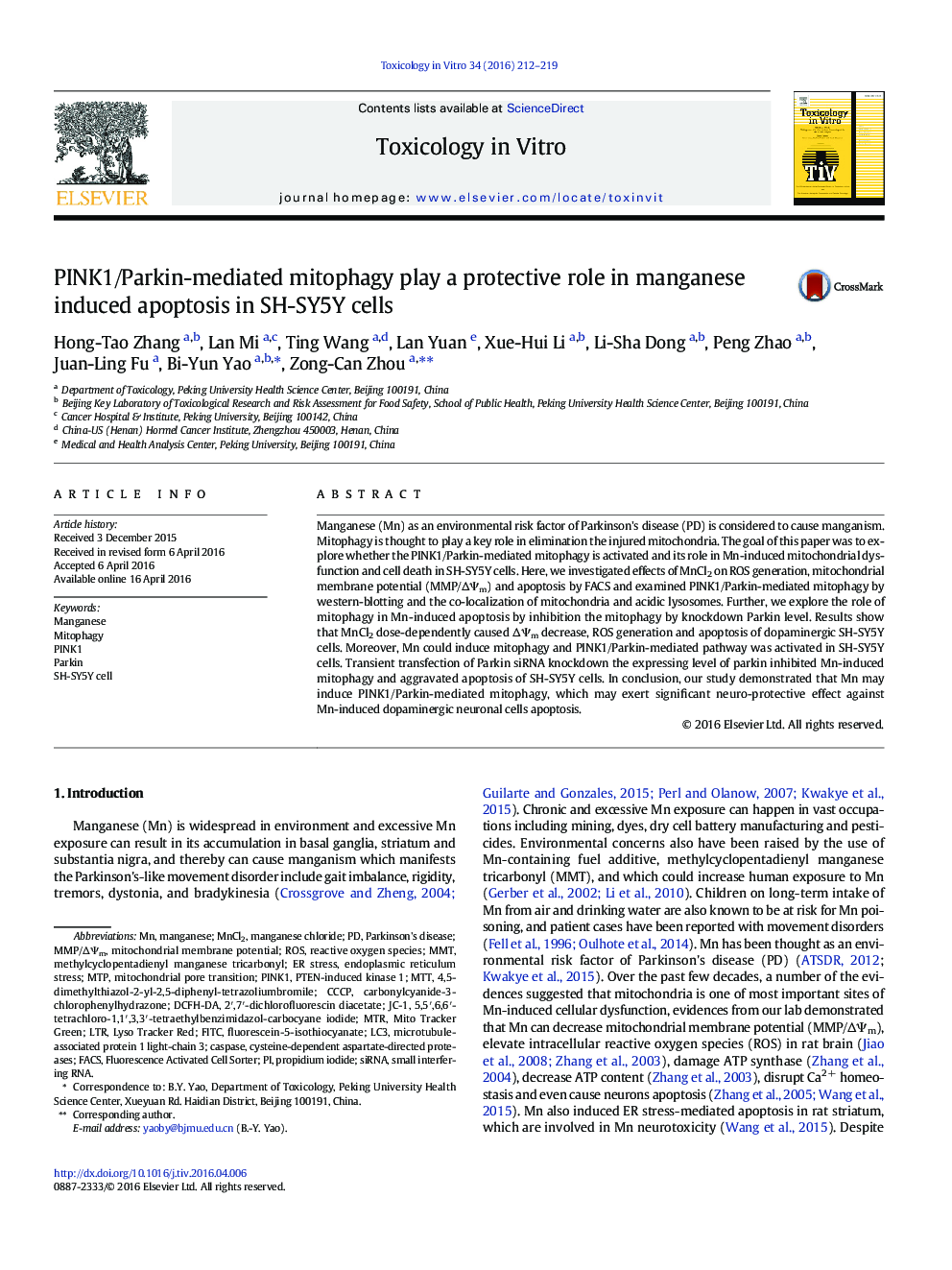| Article ID | Journal | Published Year | Pages | File Type |
|---|---|---|---|---|
| 5861081 | Toxicology in Vitro | 2016 | 8 Pages |
â¢Mn could cause mitochondria damage and apoptosis in a dose-dependent manner in dopaminergic SH-SY5Y cells.â¢Mn could induce PINK1/Parkin-mediated mitophagy.â¢Mitophagy exerts significant neuro-protective effect against Mn-induced dopaminergic SH-SY5Y cells death.
Manganese (Mn) as an environmental risk factor of Parkinson's disease (PD) is considered to cause manganism. Mitophagy is thought to play a key role in elimination the injured mitochondria. The goal of this paper was to explore whether the PINK1/Parkin-mediated mitophagy is activated and its role in Mn-induced mitochondrial dysfunction and cell death in SH-SY5Y cells. Here, we investigated effects of MnCl2 on ROS generation, mitochondrial membrane potential (MMP/ÎΨm) and apoptosis by FACS and examined PINK1/Parkin-mediated mitophagy by western-blotting and the co-localization of mitochondria and acidic lysosomes. Further, we explore the role of mitophagy in Mn-induced apoptosis by inhibition the mitophagy by knockdown Parkin level. Results show that MnCl2 dose-dependently caused ÎΨm decrease, ROS generation and apoptosis of dopaminergic SH-SY5Y cells. Moreover, Mn could induce mitophagy and PINK1/Parkin-mediated pathway was activated in SH-SY5Y cells. Transient transfection of Parkin siRNA knockdown the expressing level of parkin inhibited Mn-induced mitophagy and aggravated apoptosis of SH-SY5Y cells. In conclusion, our study demonstrated that Mn may induce PINK1/Parkin-mediated mitophagy, which may exert significant neuro-protective effect against Mn-induced dopaminergic neuronal cells apoptosis.
